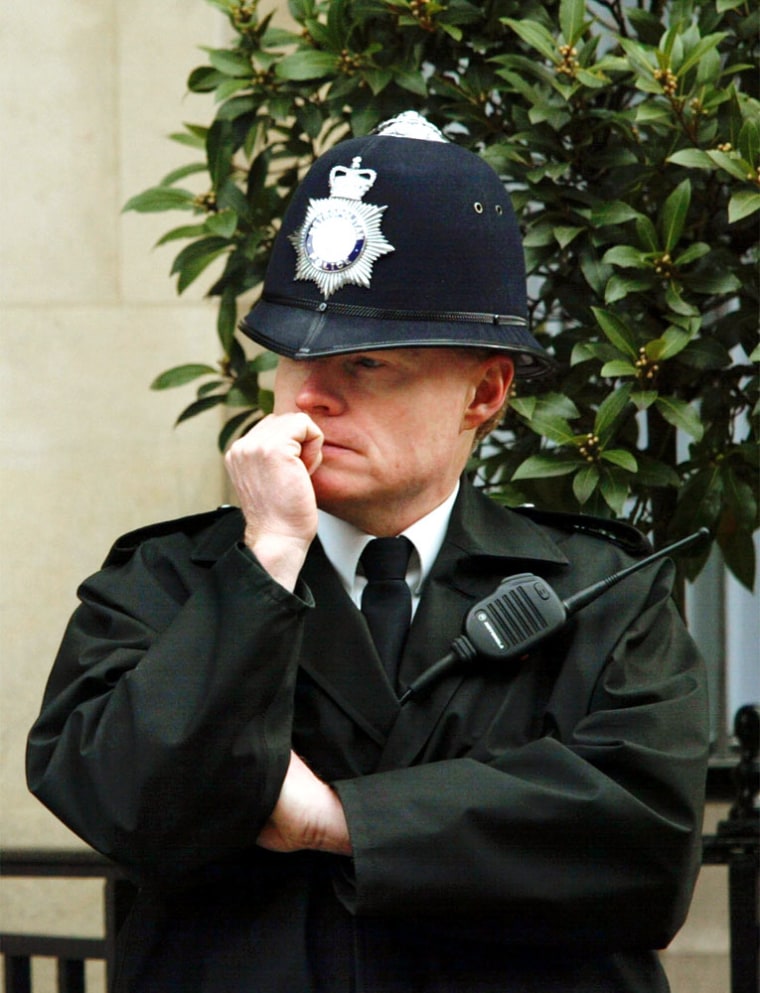My Uncle Bob was a traditional English bobby. He lived in a police house, had a police bicycle, and wore his trademark policeman’s helmet with pride.
At 6 feet, 2 inches in his stocking feet and bare head, he already towered over most of his "clientele" – the factory workers, school kids and layabouts of northwest England after the war.
Add the helmet, and he truly stood out above the crowd. And that, I guess, was partly the point.
In those days, policemen (or "coppers" as we called them — out of earshot of course) were people you literally looked up to. Or else.
As kids, my Uncle Bob used to enthrall us with tales of life on the beat, walking the sidewalks of the parish, ensuring that all was well. Not for him a land of drug pushers and gun-toting criminals. The occasional burglary, bicycle theft, and drunk seemed to keep him busy enough.
Violence was largely reserved for when the pubs closed and the "locals" refused to go quietly. It was part of Saturday night’s "sport" for Uncle Bob and his sidekick to get into the middle of these brawling drunks — and deliver a kind of frontier justice.
A swipe from a billy club hidden up the sleeve always proved an effective way of countering the thugs. The police raincapes — weighted at the hem — would stop a charging bull if swung with enough force. For us kids, playing an illicit game of soccer in the road, just a shouted cry of: “Copper!” was enough to send us running for cover.
Symbol of authority opts for shorter style
My first taste of underage liquor led me — literally — into the arms of the law as I sang my teenage way along the street in the middle of the afternoon. (The bobby* in question left the punishment to my mother — a fate far worse than any judge could mete out.)
The bobby’s helmet was a symbol of a different, arguably more peaceful time. At least, that’s how it seemed to my adolescent eyes.
In my childhood world, the most daring thing you could do was run behind a bobby in a crowd and knock off his helmet – and pray the crowd would swallow you up.
It’s a prank that’s been going on for 140 years or so – since London’s Metropolitan Police Force issued the "cockscomb" helmet, so-called because of the central ridge running front to back, like the feathers on a chicken’s head.
Some models were made of cork, others of felt made from rabbit fur, later versions were reinforced with plastic for more protection. There were the "rosetops" and the "balltops" and the "six-panel types." Whatever their modifications, to me they all looked the same: a symbol of authority.
But it's changing again. This week, the police authority announced the introduction of the first unisex headgear, a tougher helmet that will be 2 1/2 inches shorter than the traditional 12-inch model. Until now, female police officers wore bowler-style hats.
Changing times
The rot set in for the traditional helmet with the arrival of the automobile. British cars are but smaller versions of those great gas-guzzling monsters our American cousins love. To sit in one wearing a 12-inch-high hat was never going to work — unless you opened the moonroof. Enter the flat cap.
The Sixties brought us the Vietnam demonstrations, when protesters and police squared up for battle, ironically in the name of peace. The Seventies brought us terrorism and hostages and — through television — the extraordinary sight of British policemen carrying guns.
The Eighties brought us industrial conflict on a large scale, as then Prime Minister Margaret Thatcher and the trade unions set out on a fight to the finish. Miner was pitted against policeman in unforgettable, chilling scenes in which ranks of uniformed bobbies beat their riot shields with billy clubs, like an army of Zulu warriors.
The old image was changing. And the bad guys were changing too. Guns replaced fists, knives and coshes as the tools of their trade. Policemen became targets.
"Modernization" took them off foot and into cars. Police houses were sold off and police stations "rationalized" after hours, so that you called HQ 30 miles away to report a cat up a tree or an armed raid at the bank.
The changes are reflected in TV soaps: I was raised on images of an avuncular bobby known as Dixon of Dock Green, where at the end of every show Dixon stood beneath the traditional blue lamp of the station to deliver a little moral homily. These days, it’s all high-speed car chases, sharpshooters, and SWAT-teams.
Nowadays, in real life, more officers seem to get hurt doing their duty. In the U.K., one in eight police officers reportedly suffer head injuries each year.
The scientists who designed their new headgear say that the molded polycarbon fiber prototype is lighter and tougher and stays on when you run.
So perhaps we shouldn’t be surprised that the helmets got cut down to size.
The worry is, it’s not just the helmets. It’s the stature and the authority of men like my Uncle Bob who, as policemen, needed to stand tall in their communities — with, or without, their hats on.
